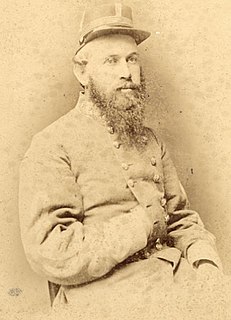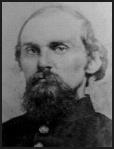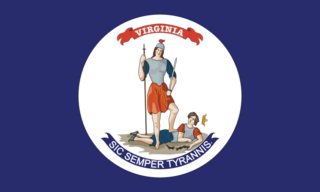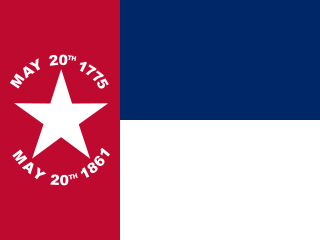
James Henry Lane was a university professor and Confederate general in the American Civil War.

John Bratton was a U.S. Representative from South Carolina, as well as a general in the Confederate States Army during the American Civil War. He rose from private to brigadier general and led a regiment and brigade in the Army of Northern Virginia in several important battles in both the Eastern Theater and Western Theater during the war.

Thomas Fentress Toon was a brigadier general in the Confederate States Army during the American Civil War.

The 27th Virginia Infantry Regiment was an infantry regiment raised in Virginia for service in the Confederate States Army during the American Civil War. It fought mostly with the Stonewall Brigade of the Army of Northern Virginia.

The 5th Virginia Infantry Regiment was an infantry regiment raised in Virginia for service in the Confederate States Army during the American Civil War. It fought in the Stonewall Brigade, mostly with the Army of Northern Virginia. The regiment was known as the "Fighting Fifth".

The 13th Virginia Infantry Regiment was an infantry regiment raised in central and western Virginia for service in the Confederate States Army during the American Civil War. It fought mostly with the Army of Northern Virginia.

The 15th Virginia Infantry Regiment was an infantry regiment raised in Virginia for service in the Confederate States Army during the American Civil War. It fought mostly with the Army of Northern Virginia.

The 24th Virginia Infantry Regiment was an infantry regiment raised in southwestern Virginia for service in the Confederate States Army during the American Civil War. It fought throughout the conflict, mostly with the Army of Northern Virginia. The 24th Virginia's most prominent field officers were Colonels Jubal A. Early and William R. Terry; Lieutenant Colonels Peter Hairston, Jr. and Richard L. Maury; and Majors William W. Bentley, Joseph A. Hambrick, and J.P. Hammet.

The 37th Virginia Infantry Regiment was an infantry regiment raised in Virginia for service in the Confederate States Army during the American Civil War. It fought mostly with the Army of Northern Virginia.

The 40th Virginia Infantry Regiment was an infantry regiment raised in Virginia for service in the Confederate States Army during the American Civil War. It fought mostly with the Army of Northern Virginia. Prior to the reorganization of the army after Chancellorsville, it was part of the first brigade of A.P. Hill's Light Division. Field officers were Colonel John M. Brockenbrough; Lieutenant Colonels Fleet W. Cox, Arthur S. Cunningham, and Henry H. Walker; and Majors Edward T. Stakes and William T. Taliaferro.

The 44th Virginia Infantry Regiment was an infantry regiment raised in Virginia for service in the Confederate States Army during the American Civil War. It fought mostly with the Army of Northern Virginia.

The 46th Virginia Infantry Regiment was an infantry regiment raised in Virginia for service in the Confederate States Army during the American Civil War. It fought mostly in Virginia and the Carolinas.

The 48th Virginia Infantry Regiment was an infantry regiment raised in southwest Virginia for service in the Confederate States Army during the American Civil War. It fought mostly with the Army of Northern Virginia.

The 58th Virginia Infantry Regiment was an infantry regiment raised in Virginia for service in the Confederate States Army during the American Civil War. It fought mostly with the Army of Northern Virginia.

The 5th New Hampshire Infantry Regiment was an infantry regiment that served in the Union Army during the American Civil War. The regiment has the unfortunate distinction of having sustained the greatest total loss in battles of any infantry or cavalry regiment in the Union Army, with a total of 295 killed and 756 wounded, for a total of 1,051 men.

James B. Terrill, often identified as James Barbour Terrill was a lawyer and an officer in the Confederate States Army.
The following list is a bibliography of American Civil War Confederate military unit histories and are generally available through inter-library loan. More details on each book are available at WorldCat. For an overall national view, see Bibliography of the American Civil War. For histories of the Union, see Bibliography of American Civil War Union military unit histories. For a guide to web sources see: Carter, Alice E.; Jensen, Richard. The Civil War on the Web: A Guide to the Very Best Sites—Completely Revised and Updated (2003).

The 20th North Carolina Infantry Regiment was an infantry regiment in the Confederate States Army. It was part of the Army of Northern Virginia for most of the war.
The 44th North Carolina Infantry Regiment was a unit of the Confederate States Army during the American Civil War.

The 34th North Carolina Infantry Regiment was an infantry regiment of the Confederate States Army during the American Civil War. As part of the Army of Northern Virginia it fought in the Eastern Theater until the surrender at Appomattox.











